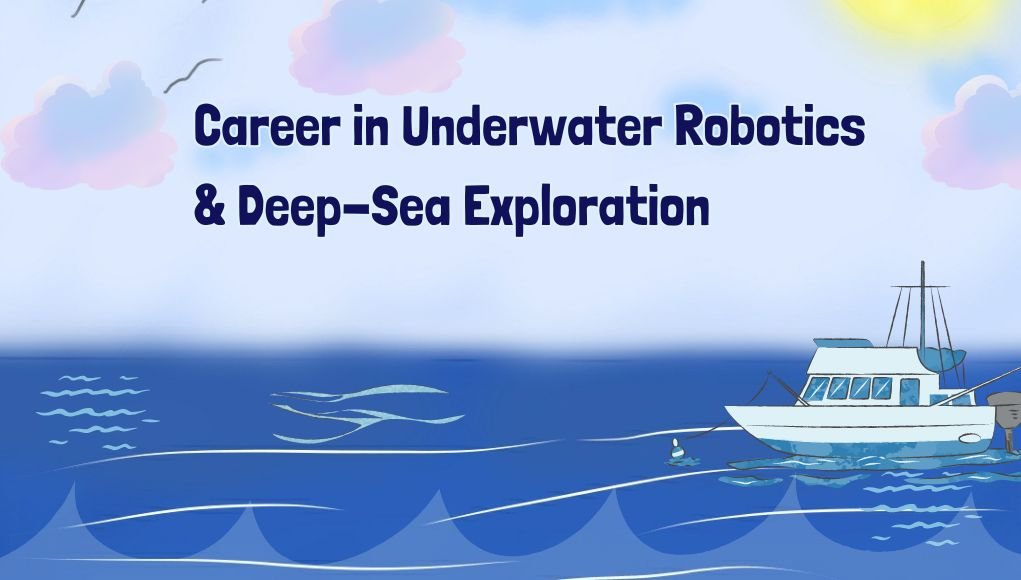Underwater robotics and deep-sea exploration represent the frontier of technological innovation and scientific discovery. This interdisciplinary field combines engineering, marine science, and computer technology to explore and understand the uncharted territories beneath our oceans. As the demand for ocean exploration and sustainable resource management grows, so do the career opportunities in this exciting domain.
Careers in underwater robotics engineering,
Deep-sea exploration job opportunities,
Underwater robotics technician positions,
Marine technology career paths,
Ocean engineering job prospects.
The Significance of Underwater Robotics in Deep-Sea Exploration
Underwater robots, also known as unmanned underwater vehicles (UUVs), are pivotal in exploring ocean depths that are inaccessible or hazardous for human divers. These sophisticated machines are equipped with advanced sensors, cameras, and manipulative tools, enabling them to perform a variety of tasks, including:
- Mapping and Surveying: Creating detailed maps of the ocean floor, coral reefs, and underwater geological structures.
- Scientific Research: Collecting data on marine ecosystems, water quality, and the impacts of climate change.
- Infrastructure Inspection: Assessing underwater pipelines, cables, and offshore platforms for maintenance and safety.
- Environmental Monitoring: Observing and recording data to monitor environmental changes and biodiversity.
The integration of robotics in oceanography has revolutionized our ability to study and interact with the marine environment, leading to significant advancements in marine science and technology.
Educational Pathways
Pursuing a career in underwater robotics and deep-sea exploration typically requires a strong foundation in engineering disciplines, such as mechanical, electrical, or computer engineering, coupled with specialized knowledge in marine science. Many institutions offer programs that cater to this interdisciplinary field:
-
University of Rhode Island (USA): Offers active research programs in ocean robotics, focusing on developing robotic platforms for various marine environments.
-
Memorial University of Newfoundland (Canada): Provides certifications as ROV technicians and bachelor’s degrees in ocean technology, preparing students to work with technologies like remotely operated vehicles (ROVs) and autonomous underwater vehicles (AUVs).
-
Scripps Institution of Oceanography, UC San Diego (USA): Offers programs with strong robotics components, integrating environmental and earth science with technological applications.
-
Woods Hole Oceanographic Institution (USA): Known for its advanced research in marine robotics, providing opportunities for students to engage in cutting-edge oceanographic studies.
-
Norwegian University of Science and Technology (Norway): Offers specialized programs in marine technology, emphasizing the development and application of underwater robotic systems.
These institutions provide a blend of theoretical knowledge and practical experience, equipping students with the skills necessary to excel in this field.
Career Opportunities
The field of underwater robotics and deep-sea exploration offers a diverse range of career paths across various sectors:
Research and Development
Professionals in this area focus on designing and improving underwater robotic systems, developing new technologies for exploration, and enhancing data collection methods. Organizations such as the Woods Hole Oceanographic Institution are at the forefront of such innovations.
Environmental Monitoring and Conservation
Organizations like the Ocean Research & Conservation Association (ORCA) employ underwater robotics to monitor marine ecosystems, assess environmental impacts, and develop conservation strategies.
Offshore Energy Sector
The energy industry utilizes underwater robots for inspecting and maintaining offshore oil rigs, wind farms, and subsea pipelines. Companies such as XOcean specialize in deploying uncrewed surface vessels (USVs) for data collection in offshore operations.
Defense and Security
Naval forces and defense contractors employ underwater robotics for surveillance, mine detection, and reconnaissance missions. The U.S. Navy, for instance, offers roles in search and rescue operations that involve the use of advanced underwater technologies.
Deep-Sea Mining
As interest in deep-sea mining grows, robotics engineers are needed to develop and operate machines that can extract minerals from the ocean floor responsibly and sustainably.
Job Prospects and Resources
The demand for professionals in underwater robotics and deep-sea exploration is on the rise globally. Here are some resources to explore current job opportunities:
-
Indeed: A comprehensive job search platform listing various positions in underwater robotics.
-
ZipRecruiter: Offers listings for high-paying roles in underwater robotics across different industries.
-
Reddit: Communities like r/robotics discuss ocean exploration robotics jobs, providing insights and potential leads.
Networking through professional associations, attending industry conferences, and engaging in online forums can also open doors to new opportunities.
Further Reading
To deepen your understanding of underwater robotics and stay updated with the latest developments, consider exploring the following resources:
-
NOAA Ocean Exploration: Provides educational materials and insights into underwater robots and their applications.
-
Built In: Offers articles explaining how underwater robotics work and their real-world applications.
-
Smithsonian Ocean: Features information on how underwater robots are used to explore the ocean.
Engaging with these materials will enhance your knowledge and keep you informed about the evolving landscape of underwater robotics and deep-sea exploration.
Embarking on a career in underwater robotics and deep-sea exploration offers the opportunity to contribute to groundbreaking discoveries and technological advancements.
